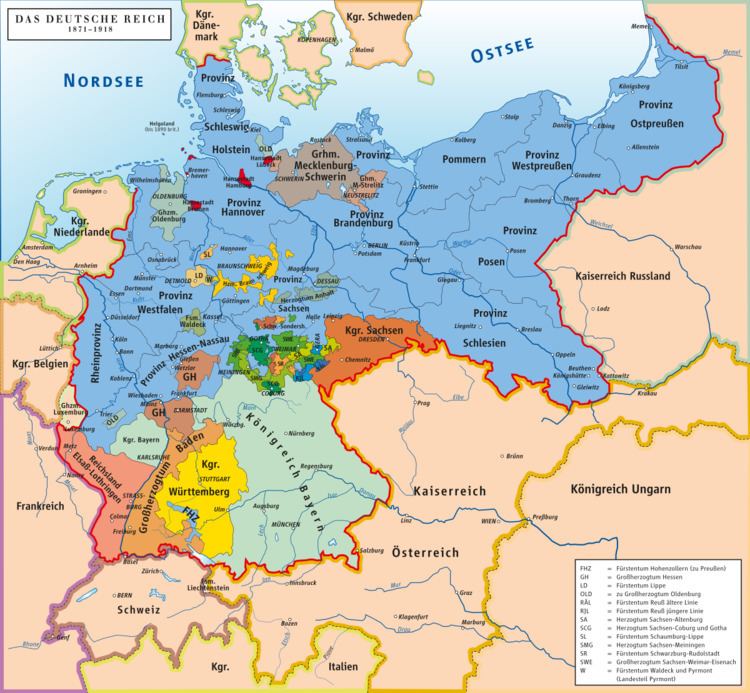 | ||
Central Germany (German: Mitteldeutschland) is an economic and cultural region in Germany. Its exact borders depend on context, but it is often defined as being a region within the federal states of Saxony, Thuringia and Saxony-Anhalt, or a smaller part of this region, such as the metropolitan area of Leipzig and Halle.
Contents
The name dates from the German Empire, when the region was approximately in the centre of the country. Since the German Empire's eastern territories became part of Poland (and Russia in the aftermath of World War II), "Central Germany" has been located east of the centre of the country, but the name is still often used in business, media and by the Central German Metropolitan Region.
History
Historically also including most of Hesse, parts of Franconia and the south of Lower Saxony, the region is described as an area south of the linguistic Benrath line where Central German dialects were spoken. It ranked for centuries as one of the most advanced areas in Germany, a centre of both the Protestant Reformation and the 19th-century Industrial Revolution.
Until World War II, this area was seen as the middle of Germany due to it lying approximately midway between Aachen and Königsberg. The Middle German Chemical Triangle was the central region of the three main German industrial areas between the Ruhr and Upper Silesia. In 1929 the Free State of Prussia and the Holy See agreed in the Prussian Concordat to combine several Catholic dioceses to form the new Middle German Ecclesiastical Province, spreading over eastern Westphalia, northern Hesse, most of Thuringia, today's Saxony-Anhalt and small parts of Saxony. After 1945, when Germany lost its eastern territories, most of Middle Germany fell into the Soviet Zone of occupation, becoming Germany's new East, which is why the 1949-founded German Democratic Republic (GDR) is often referred to as East Germany.
For decades until Chancellor Willy Brandt started his Ostpolitik in 1969, official West German usage spoke of "Central Germany" to denote the German Democratic Republic. The term was used by both the Christian Democratic Union and the Social Democratic Party of Germany, and by a large number of West German residents who had been expelled from the eastern provinces, who held a wide range of political views. However, after the West German Federal government accepted the fixed eastern border with Poland in 1970, implying that parts of Poland were still "eastern Germany" was associated only with far-right and revanchist viewpoints.
Post-reunification
After the 1990 German reunification, activists (e.g. Aktion Mitteldeutschland e.V.) claimed that the larger Leipzig–Halle area would benefit from asserting an economic identity, separate from the other more rural new states of former East Germany. The use of the term "Central Germany" was meant to underline its location in Central Europe and to recall the industrial glory of the area in former times. Mainly it is used in business and the media.
In 1991, the states of Saxony, Saxony-Anhalt, and Thuringia founded the public regional broadcaster Mitteldeutscher Rundfunk (Middle German Broadcasting), a member of the ARD network. Private companies located in the area of Leipzig, Halle and Dessau often use the term "Central Germany", as do the Evangelical Church in Central Germany and some sports competitions, such as the Mitteldeutsche Meisterschaften (Central German Championships).
The Central German Metropolitan Region comprises a regional development zone in the European METREX network. As of 2014 it includes major cities in Thuringia and Saxony-Anhalt, as well as the "Saxon triangle" of cities that set up the organization in 1994 (Leipzig, Halle, Dresden and Chemnitz-Zwickau).
Although most methods for determining the geographical center of Germany result in a point in "Central Germany" (for example Niederdorla in western Thuringia), the three-state area also comprises Görlitz, the easternmost town in Germany, which lies on the border with Poland.
